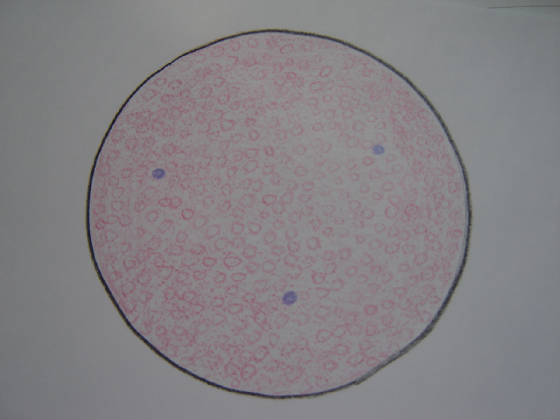|
Blood, which makes up about 7-8% of body weight, is an essential fluid composed of four main components:
Red cells, white cells, platelets and plasma. Red cells, called erythrocytes, are rather large cells without nuclei, which
make up about half of the total volume of blood. They carry oxygen to the necessary cells of the body and carbon dioxide away
with the help of hemoglobin, a protein molecule. White blood cells, called leukocytes, add up to a very small amount of blood
volume, usually about 1%. Leukocytes are part of the body’s immune system (such as lymphocytes), and also protect the
body from infection caused by bacteria, viruses, fungi and other parasites (such as gametocytes and macrophages). The third
component, platelets, are also known as thrombocytes. Having a size of 1/3 that of a red blood cell, they are responsible
for clotting blood in the case of a wound and also stimulate the immune system. Plasma is an opaque protein and salt solution
which transports the red cells, white cells and platelets throughout the body. About 55% of the blood volume is plasma, which
also contains proteins, antibodies, enzymes, hormones, minerals, vitamins, lipids, sugars and blood clotting factors. Together,
these four components play a fundamental role in maintaining not only the immune system, but also a constant body temperature.
|






